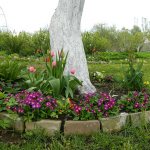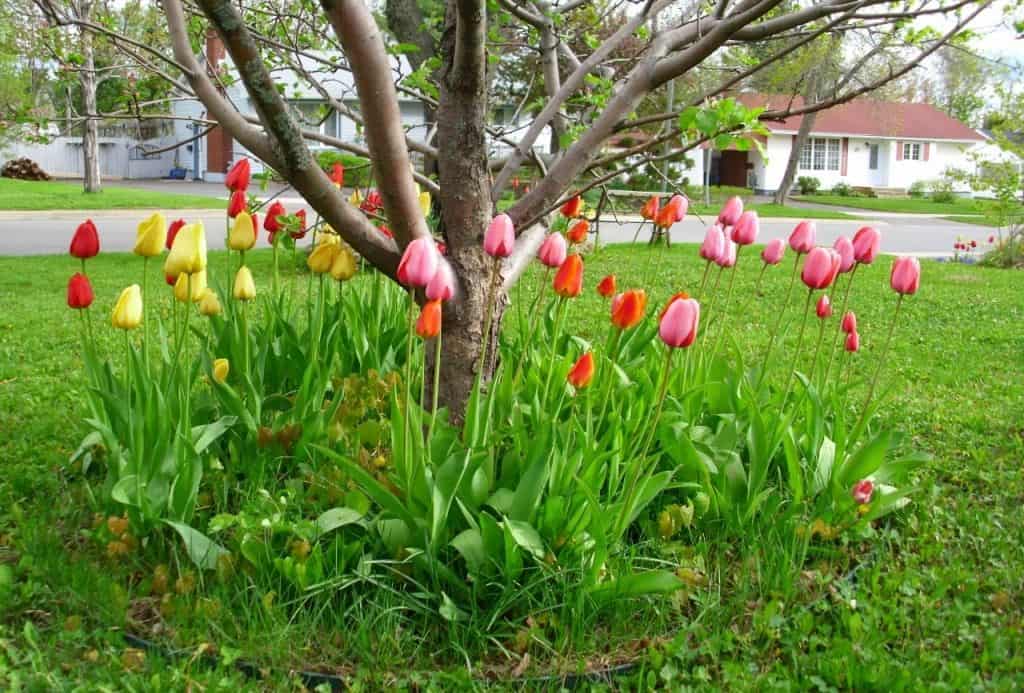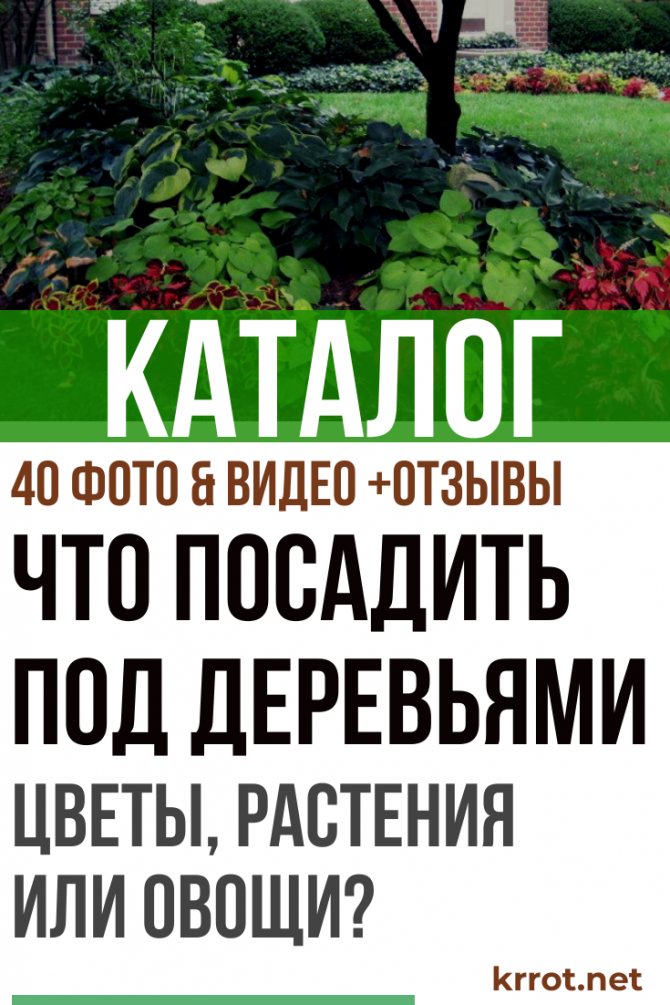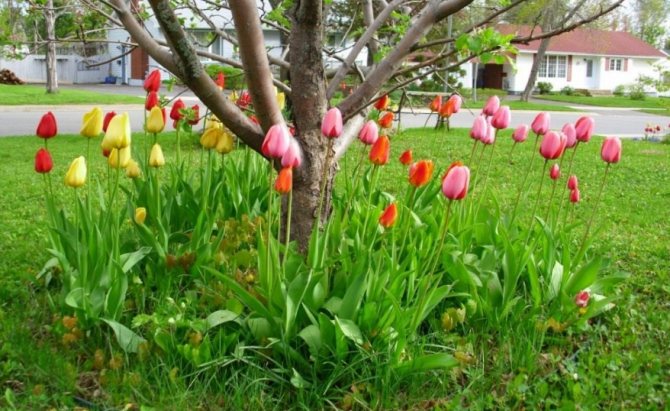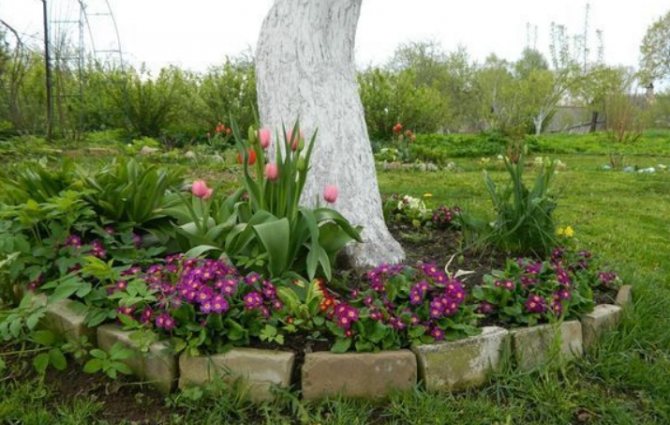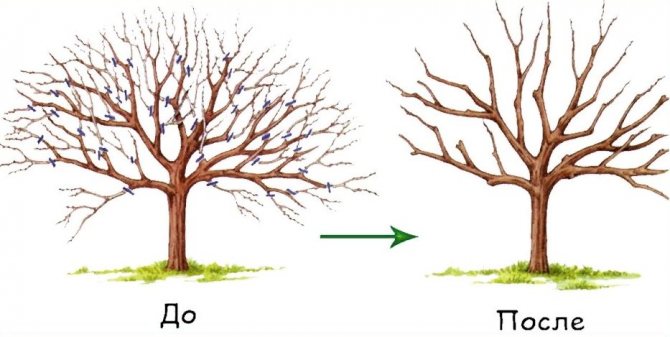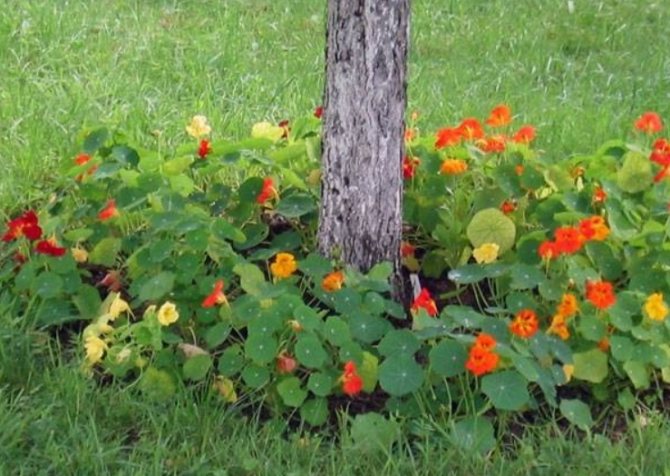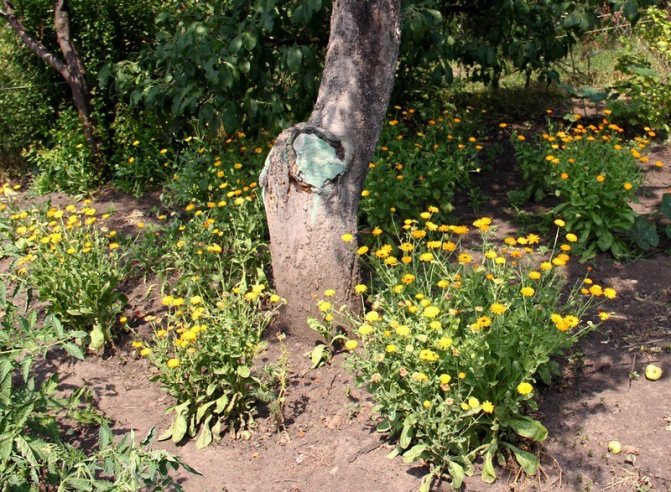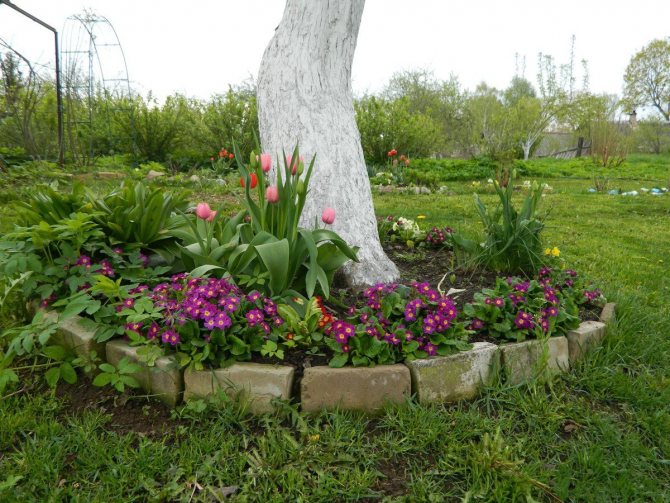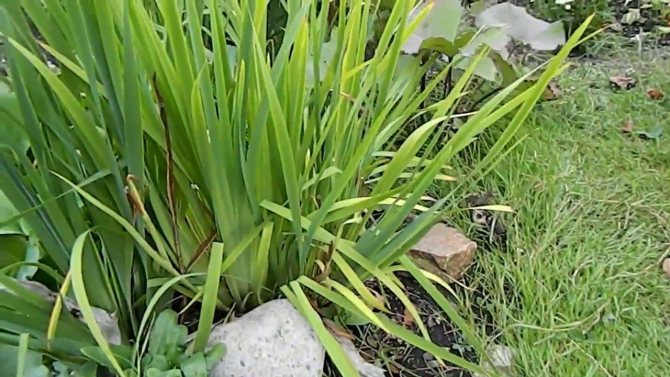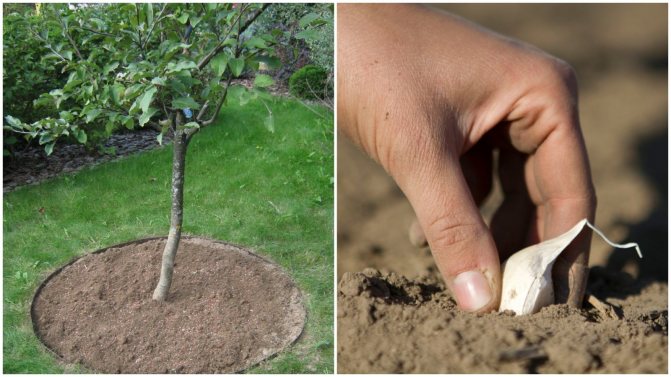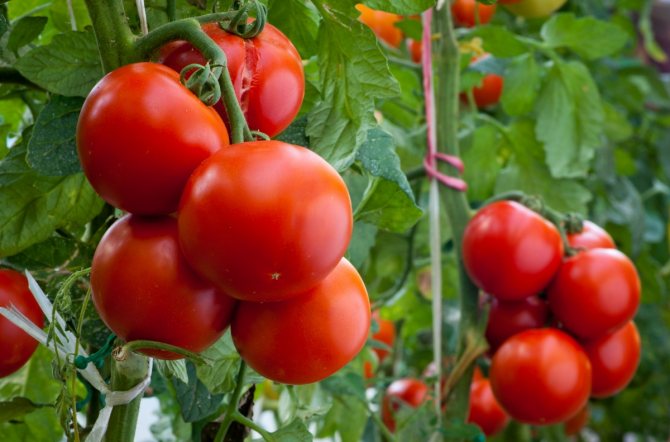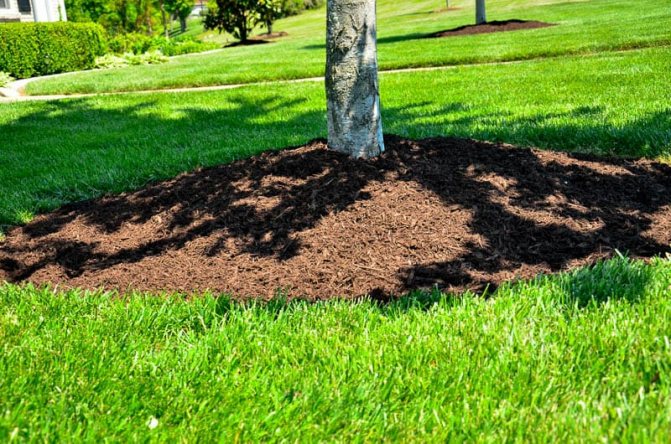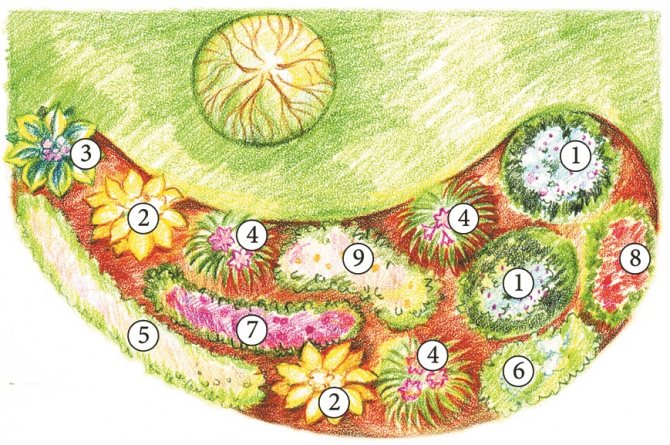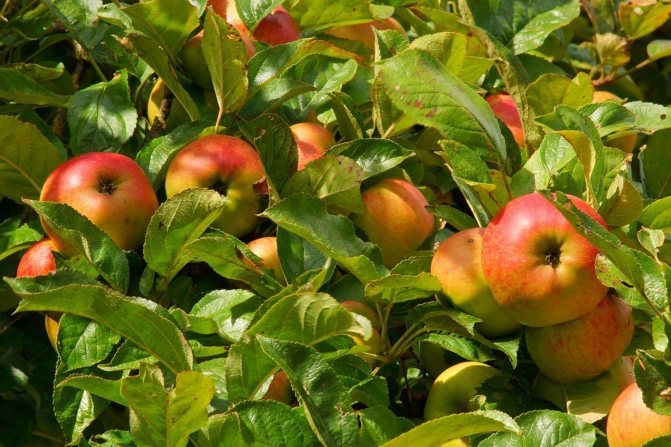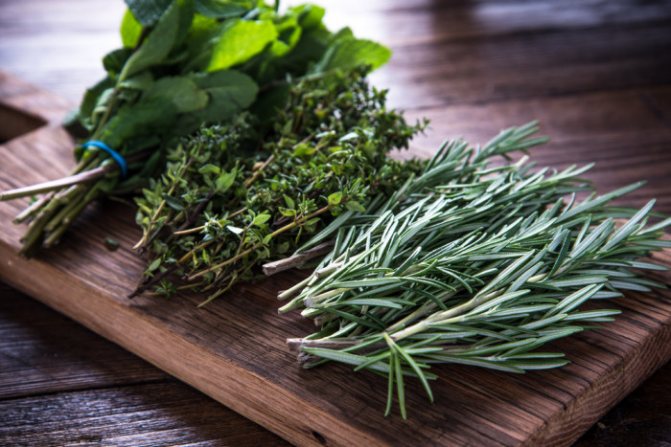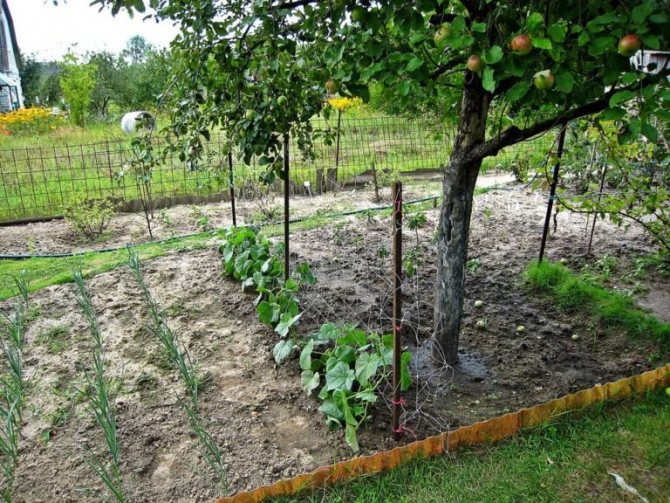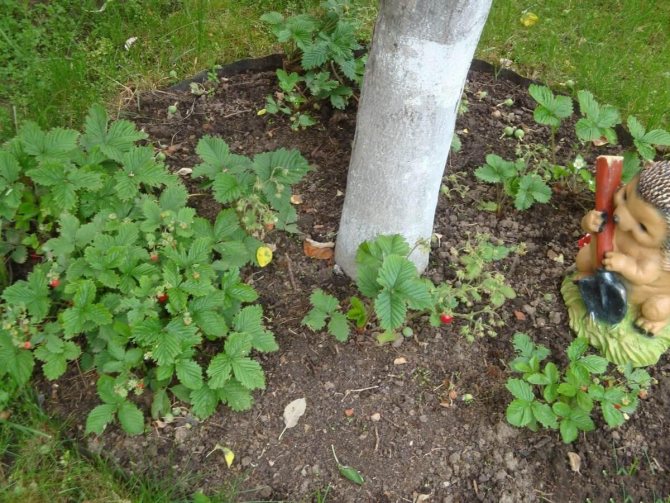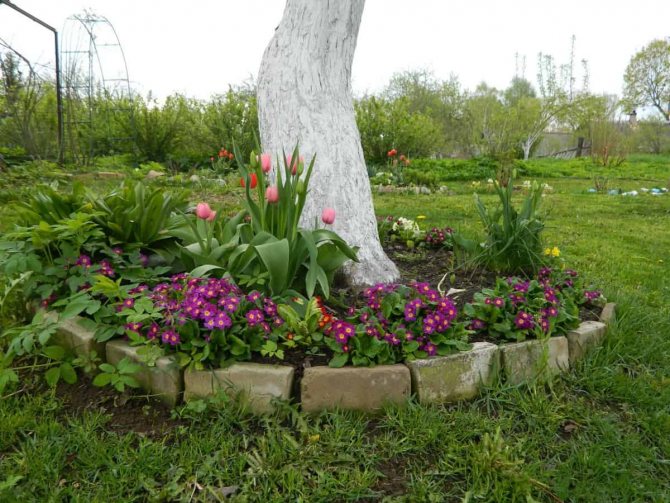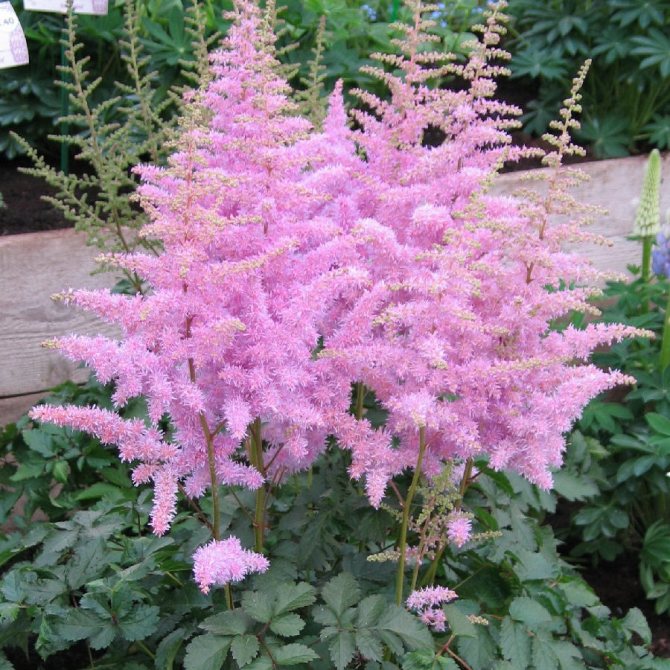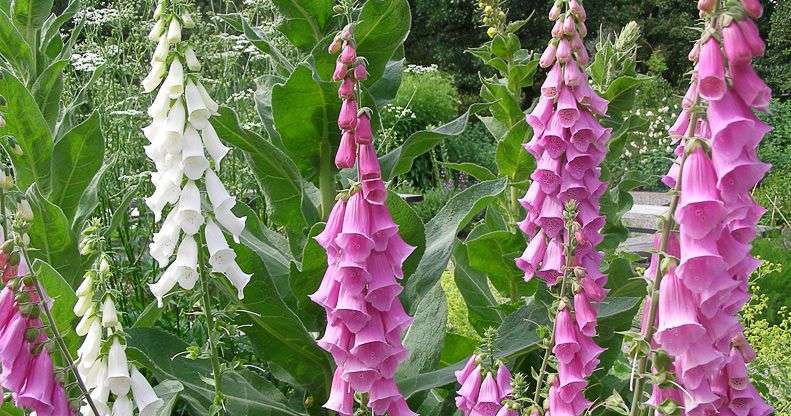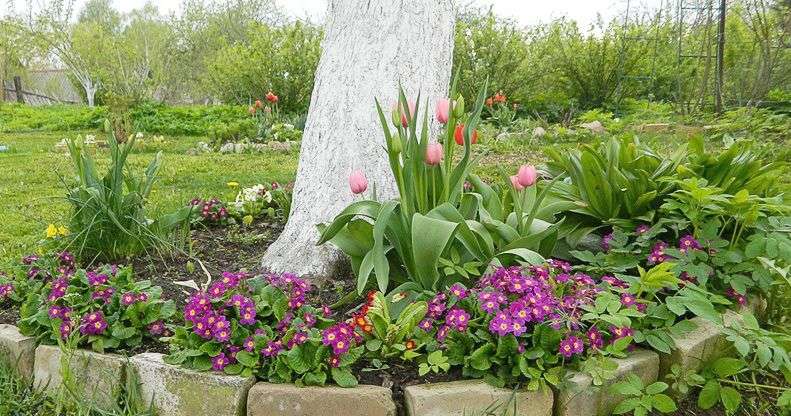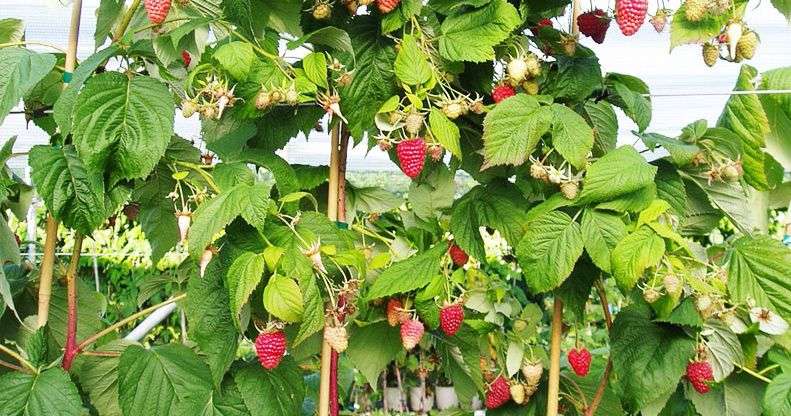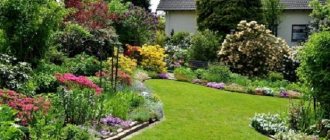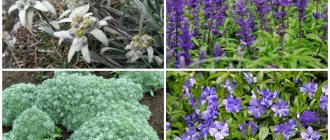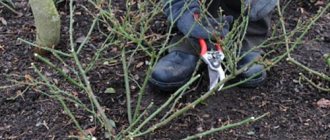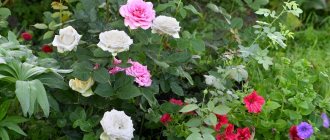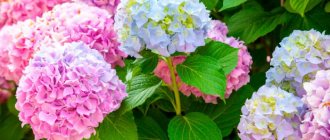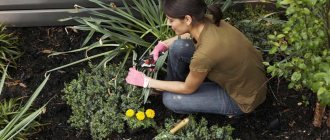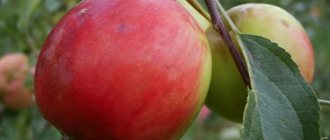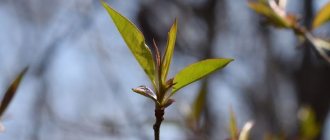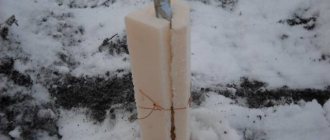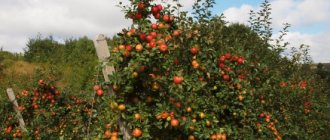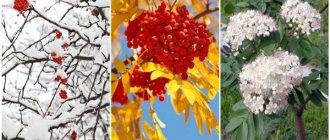Rules for planting plants in the trunk circle
When choosing planting material for placement in the near-stem circle of an apple tree, one should take into account the compatibility of plants, their effect on the soil, and the peculiarities of the root system. If the apple tree has begun to bear fruit poorly, then you can pick up such crops that will make up an excellent symbiosis with it: they will heal the roots of the fruit tree, affecting the composition of the soil, scare off pests, and the apple tree, in turn, will create partial shade for plants favorable for their growth.
Fundamental rules:
- the free radius from the root collar of the tree must be at least 20 cm;
- you do not need to densely plant the trunk circle, since you will have to step into it in order to collect the fallen apples;
- if apple trees are treated with chemicals, then it is better to plant flowers or green manure plants under them;
- the earth of the trunk circle is dug no deeper than half the bayonet of a shovel, it is preferable to use a pitchfork;
- plants with a powerful root system, as well as shrubs, cannot be planted under an apple tree.
Advice
Top dressing of fruit trees is not done in the near-trunk circle, as many mistakenly believe, but along its contour, where the suction roots are located. To do this, several plastic bottles with a cut bottom are dug in with the neck down along the perimeter. Top dressing is done in them. After a couple of years, the bottles move, and the pits are filled with turf.
The following plants should not be planted under the apple tree:
- mint;
- parsley;
- onion;
- carrot;
- white cabbage.
The choice of crops for growing under an apple tree is also determined by the shape of the crown, which is periodically useful to thin out.
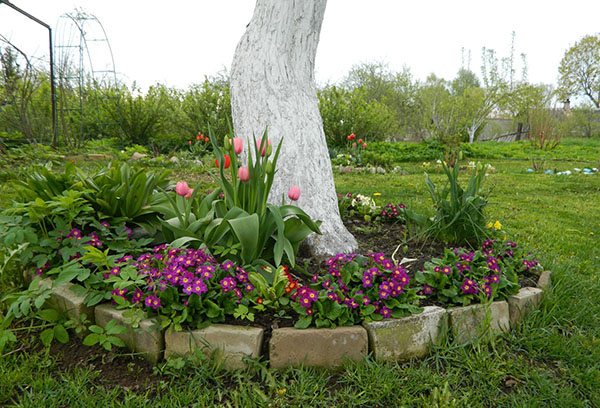
Video
Related Articles
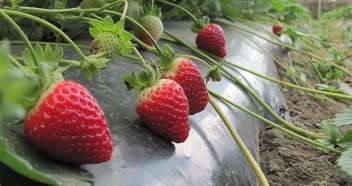

How to plant strawberries outdoors
At each site, both an experienced gardener and a novice amateur can find at least a small bed of strawberries. This delicacy is for everyone's taste. But to get a rich juicy harvest ...
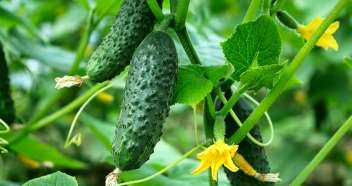

How to feed cucumbers?
You need to take care of cucumbers throughout their entire growth and development, then there is a high probability of getting a good harvest.
In addition to watering, loosening and weeding, they need to be fed ...
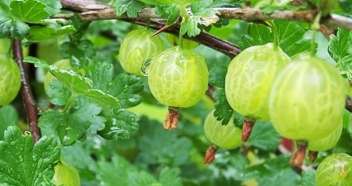

How to care for gooseberries?
As soon as the summer cottage season begins, many of its lovers begin to massively buy all kinds of seedlings and seedlings. Whether it's just a tree, or a lush bush of peonies - everything, from small to large ...
Flowers, ornamental plants
If the site has an unfavorable infectious background, as a result of which the apple trees during the growing season need to be periodically sprayed with chemicals, then it is safer to fill the near-stem circle with ornamental plants and flowers.
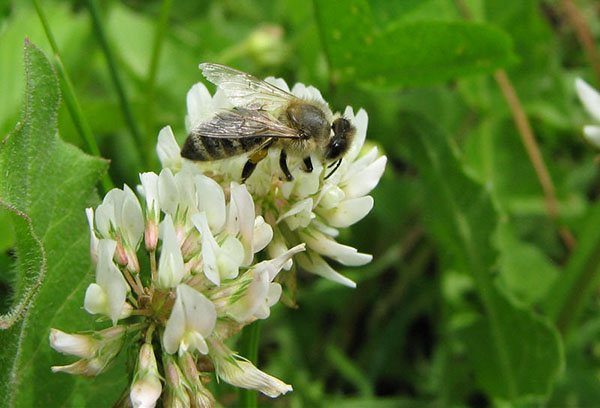

Wild
Some flowers do not need to be purchased or grown as seedlings - they can be dug up on the side of the road or in the meadow.
Tansy belongs to the popular decorative “savages”. This is a tall, unpretentious perennial flower that forms lush openwork bushes that grow well in the shade. Its main value lies not in the beauty of the original yellow inflorescences, but in the ability to scare away aphids and moths from the apple tree. Tansy reproduces by self-seeding, therefore, its habitat will increase every year.
The apple tree trunk circle can be sown with white clover. It forms a soft, beautiful gas, on which it is convenient to relax in the summer heat, and as the harvest ripens, the falling apples will remain clean and will not be beaten. In addition, white clover is an excellent honey plant that attracts a large number of bees, which is necessary for high-quality pollination of the apple tree. Another bonus when planting this plant in the trunk circle is its ability to saturate the soil with nitrogen and protect the roots of the tree from the attack of the larvae.
Celandine grows in many areas. Gardeners prefer not to completely exterminate it, since this medicinal plant is a natural iodine: for disinfection, it is enough to burn the wound with juice from a broken twig. Celandine and apple will come in handy as an effective remedy for aphids. These insects lose activity (fall asleep) from substances secreted by the plant.
Advice
After flowering, celandine quickly loses its decorative effect, so it is advisable to dilute it with other plantings.
Some summer residents on their plots stubbornly struggle with thickets of lupine, which is actively sown and sprouting literally everywhere. But it is this flower that can significantly increase the yield of the apple tree if it is planted in a near-stem circle. The main thing is to remove fading peduncles in time in order to avoid uncontrolled reproduction. Lupine is a green manure that actively accumulates nitrogen. In the fall, these plants can be crushed and the soil can be mulched (but not dug in).
The apple tree trunk circle can also be sown with white mustard, which is a good honey plant and green manure at the same time.
Advice
You should not plant lilies of the valley in the near-stem circle of an apple tree: the root system of these plants will oppress the roots of the tree, and it is quite difficult to find fallen apples in the thickets.
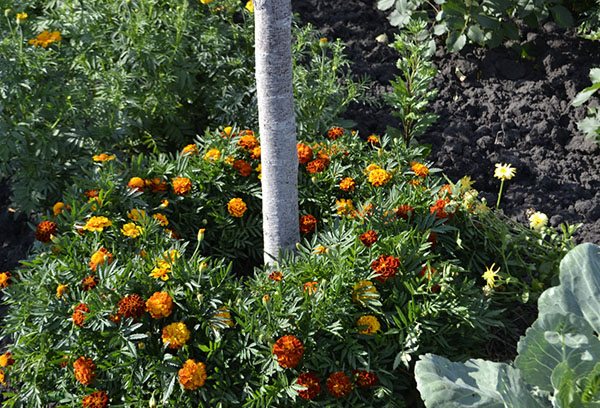

Cultural flowers
You can effectively decorate the apple tree trunk circle with the help of marigolds. These unpretentious flowers not only protect the soil from fungus and nematodes, but also scare away many unwanted insects with their smell. Summer residents note that after planting marigolds under the apple tree, ants stopped nesting, respectively, and the aphids that they carried disappeared.
The apple tree will also look beautiful, surrounded by a lush carpet of nasturtium, which will cover the trunk circle until the first frost. This flower shades the soil well, serving as a living mulch, and also scares off bedbugs, leaf beetles, and whitefly.
Will revive the space under the apple tree and calendula. During the flowering period, this medicinal plant will drive away many pests and attract ladybirds - the main exterminators of aphids.
Aquilegia, daylilies, irises develop well in the openwork penumbra. You can also plant a swimsuit, liverwort, primrose. Many summer residents plant spring flowers in the tree trunk circle of apple trees, decorating the site until the tree is covered with foliage: daffodils, tulips, crocuses.
Popular shade-tolerant plants with highly decorative leaves are hosta and brunner. With their help, you can create spectacular compositions. Stonecrop, hardy, astilbe also feel comfortable under the apple tree.
Advice
Do not plant periwinkle under the apple tree. According to the observations of gardeners, this ground cover oppresses the fruit tree, taking away a lot of nutrients.
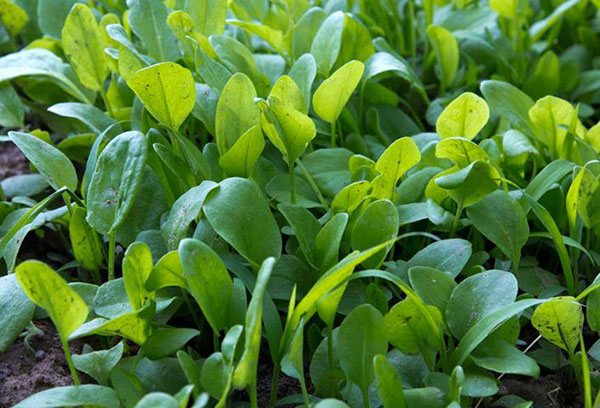

Alternative options


In addition to planting flowers and shrubs, the area under the trees can be used to create a seating area and set up a gazebo. This is an especially good option in the case of planting conifers, which do not tolerate "neighbors from below", as well as other trees that create unfavorable conditions for basal vegetation.
back to menu ↑
See also: Trellis: reliable support for climbing stems (cucumbers, tomatoes, raspberries, clematis and other plants).Original ideas and drawings (110+ Photos & Videos) + Reviews
Turfing
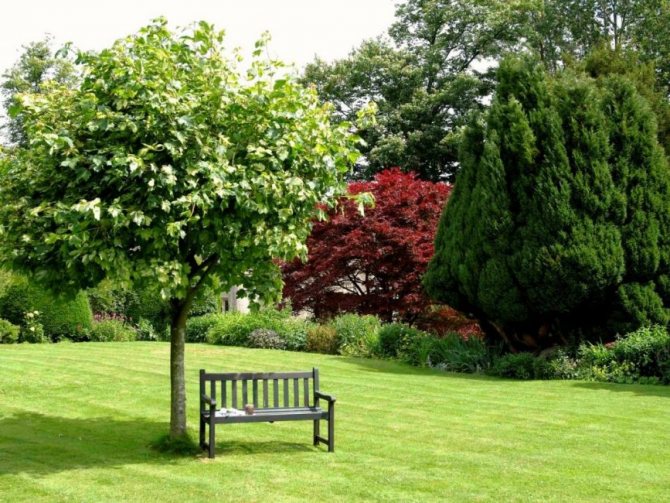

The grass on the near-trunk lawn looks just fine
Sodding or tinning is the simplest, as well as the most beautiful and budgetary way to decorate a plot under a tree. With the correct laying of a near-stem lawn, you can not only create an excellent place for a gazebo, but also solve a set of other problems:
- improve the general condition of the soil
- reduce soil salinization
- rid trees of chlorosis
- improve the quality of fruits
- prevent the soil from drying out
- protect roots from damage during tillage
Low grass of a bright green hue looks especially good on the near-trunk lawn, for example, the bent grass. She looks very juicy and well-groomed. Also suitable are white clover, meadow clover, sheep or red fescue, meadow bluegrass and perennial ryegrass.
Do not tin the soil under trees on clonal rootstocks.
back to menu ↑
See also: Hunting belt for fruit trees from garden pests: description, types of belts, DIY making + Reviews
Mulching
Under natural conditions, mulch is continuously formed in the root zone of the tree. Mulch is a natural material that retains moisture and inhibits weed growth.
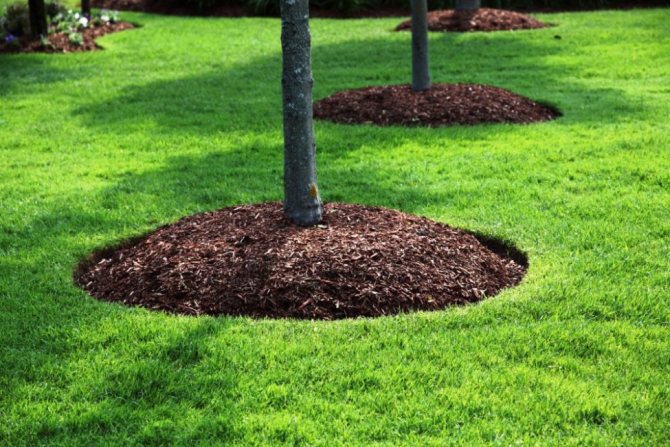

Mulching the trunk circle
Mulch also protects against:
- erosion
- washout
- freezing
An important criterion when choosing a material for mulching is the ability to pass air to the trunk, root collar, and also the roots of the tree. Also, mulch should not interfere with the release of hydrogen sulfide and carbon dioxide from the soil.
Mulching trees: different options
For mulching, you can use both organic and inorganic materials:
1Dry leaves, not damaged by any diseases, help to provide the soil with much needed humus, saturate it with calcium and magnesium. But there are also disadvantages: first, the material must be composted, and during the winter pests often appear in the leaves.
2 Needles are suitable for soil with low acidity, moreover, it reliably protects the soil from small rodents. But the resin, which inevitably gets to the soil along with it, can negatively affect the processes taking place in the soil.
3Sawdust and wood shavings are excellent at trapping snow and acidifying the soil. But when they decompose, the access of nitrogen to the root area decreases, therefore, before being used as mulch, the sawdust must be aged for two years with the addition of sand, nitrogen fertilizers and dolomite.
4 The cut grass has a beneficial effect on the structure of the soil, enriches it with carbon. But do not make the mulch layer too dense: mucus may form, which "burns" the plant.
5 Hay is not only very nutritious, but also quickly rotting, enriching the soil with minerals, useful trace elements and other valuable substances. However, hay mulch can attract rodents, slugs, and also trigger the growth of weeds, the seeds of which are often found in straw. In addition, bushes and trees with hay mulch wake up longer in spring: it does not contribute to the rapid heating of the soil.
6Bark and wood chips are suitable for mulching the trunks of already mature trees. They are placed in a second layer on top of the compost. But before use, it is necessary to ventilate the mulch so that the toxins disappear. This type of coating is durable, but it can provoke a lack of ozone in the soil.
7 Cardboard and cut paper can be used as backing for grass clippings, leaves or compost. However, since they are inorganic materials, they do not feed the soil.
8 Agrofibre perfectly permeates air and moisture, does not form a soil crust, which impedes drainage and aeration of the soil.The main disadvantage of such mulch is that it must be removed when applying top dressing and loosening, and then put it back.
9Stones, tracing paper and gravel contribute to the creation of a comfortable level of humidity and healthy heat exchange of the root ona. However, such mulch negatively affects the acidity of the soil and slows down the accumulation of useful organic matter.
10Compost improves soil structure, perfectly controls evaporation, provides good drainage, and nourishes the soil with nutrients and microelements. This is the best option for mulch made from natural organic material.
back to menu ↑
See also: Perennial flowers (33 main species): garden catalog for a summer residence with photos and names | Video + Reviews
Garden crops and herbs
If the apple tree does not need periodic spraying with chemicals during the summer, then plants for food can be planted in the trunk circle. Many of them do well in partial shade.
Garlic is one of the apple-tree-friendly neighbors. Planted before the winter, it keeps the root system of the tree from being eaten up by rats, and in the summer it releases healing phytoncides into the soil. At the same time, the heads are formed standard, and the greens are much richer than in the sun.
You can plant peas and curly beans in the trunk circle (except for the "Vigna" variety - it is very capricious). These crops look spectacular when tied to the lower tier of branches. By adding a little peat and sand to the soil, you can successfully grow wild garlic.
Sorrel and spinach placed under the apple tree can please with a rich harvest. These crops, in partial shade, form powerful, spreading shrubs with succulent leaves, provided the soil is sufficiently nutritious and well hydrated. Various types of lettuce will also grow well.
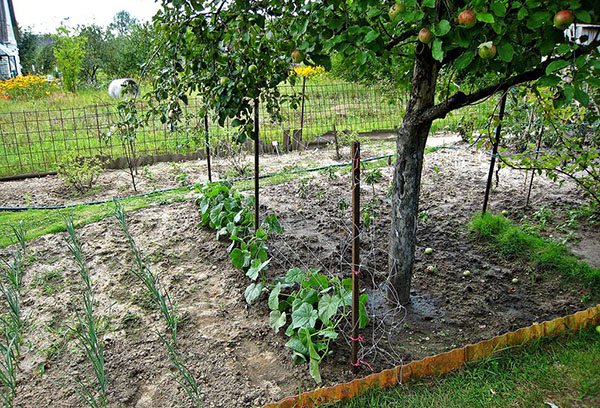

Cucumbers
Many gardeners are actively sharing their experience of successfully growing cucumbers under apple trees. This is quite realizable if the crown of the tree is correctly formed, thinned out, and the lower branches are high enough from the ground. Planting cucumbers is done no closer than a meter from the trunk, but better - closer to the edge of the trunk circle. Rotted manure is preliminarily introduced into the soil. But it is best not to disturb the roots of the apple tree by digging, but to put several cisterns or buckets without a bottom around the tree. Coarse compost is poured down, then good humus mixed with soil, where cucumber seedlings are planted.
The lashes of cucumbers are light, so they can be tied to the lower branches of the apple tree. This is useful not only from the point of view of the purity of vegetables, but also for prolonging fruiting: directly at the ground, the air temperature is lower than at a distance of 1-2 m, so the autumn night cold snaps will not be scary for the whips for some time.
Cucumber whiskers willingly cling to the tree, making their way into the crown. The foliage of the apple tree protects them from cold dew and partly from rain, so the lashes are much less likely to be affected by downy mildew.
Advice
Cucumbers under the apple tree will produce more female flowers if fed with "fermented water": a few moldy pieces of bread are soaked in a bucket of water that is exposed to the sun. When bubbles appear, the solution is mixed several times, then used to water the cucumbers.
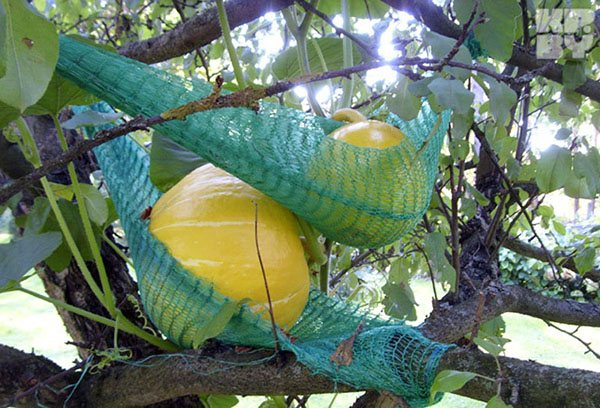

Pumpkins and zucchini
Pumpkins and zucchini can also be placed under an apple tree, if the trunk circle is well open and is illuminated by the sun for several hours.
An example of a landing option:
- the area under the apple tree is mulched with a thick layer of rotted manure mixed with shavings;
- holes are made in the mulch, which are filled with fertile soil;
- germinated seeds are laid out in the holes or seedlings are planted.
Important!
You should not plant both pumpkins and zucchini under the same tree.
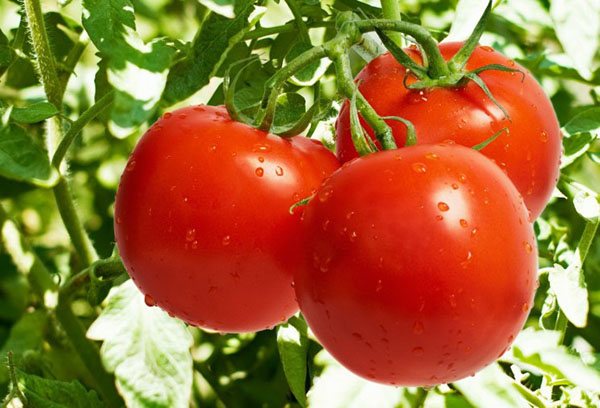

Tomatoes
Resourceful summer residents attach rooted stepchildren of tomatoes under the apple trees, which it is a pity to throw away after processing the bushes in greenhouses.Some initially plant several tomatoes in the near-stem circle to scare off pests (the moth does not tolerate the smell of the tops), but they also get a decent harvest of fruits as a bonus.
It should be noted that growing tomatoes in unprotected soil is the prerogative of the southern regions. In most regions of Russia, such experiments may end in failure: the growth of the bushes will be inhibited, late blight will overtake them early, there are few fruits, they ripen slowly. But in a good summer, the harvest may well please.
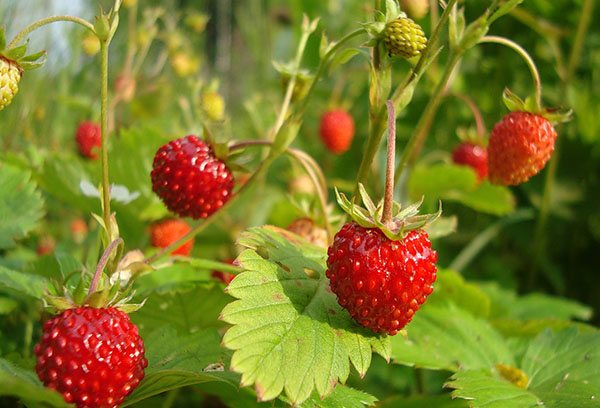

What can be planted under an apple tree
As a rule, the trunk circle in diameter corresponds to the size of the tree crowns. It is from the trunk circle that water, vital nutrients for the tree and air for the roots come from. The structure of the apple tree crown can be: dense, sparse or delicate. The leaves on the spreading branches of the apple tree create light shading, and thus the place under the crown becomes an excellent place for many shade-tolerant plants to grow.
Moreover, such plantings give an interesting zest to any design, and for the roots of an apple tree there are only solid advantages (there will be no dry soil).
There are several options for using the space at the trunk of an apple tree: sodding, planting flowers, vegetables, greenery.
Berry plants
You can plant strawberries or strawberries in the tree trunk circle of the apple tree. Wild strawberries from the forest are best suited, several bushes of which, with the help of whiskers, soon form a living carpet under the tree of light green carved leaves, flowers and very useful berries. So that the strawberries are not threatened by nematodes and rot, it is enough to plant a few cloves of garlic between the bushes.
Almost analogous to strawberries is Indian dusheney. But it blooms not with white, but with yellow flowers, berries are unsuitable for food. This plant can be planted exclusively for decorative purposes and to protect the soil from drying out.
There is no universal list of crops that would grow equally well in the shade of apple trees in all areas of any region. Every gardener creates ecological niches in their land through trial and error. In some cases, the structure of the soil, the shape of the crown of the fruit tree, and the weather fail.
In the first year, you can try to plant several dissimilar plants at once in the near-stem circle of an apple tree with one goal - to check the degree of their comfort. Then use proven crops in subsequent seasons. You should also not forget about the timely thinning of the apple tree crown and soil dressing.
Which trees are best to have an apple tree next to?
It is important to place plants nearby that will not damage the tree. Unwanted neighbors are:
- Rowan and bird cherry... Both on that and on the other tree there are often pests that move to the apple tree, if it is located nearby. Therefore, it is desirable to locate these crops at a distance.
- Jasmine, birch and lilac - unwanted neighbors. They negatively affect the growth and fruiting of the tree.
- Raspberries deplete the topsoil... Therefore, it is also better to plant it further away.
As for good neighbors, they are as follows:
- Plums and pears performed very well... But it is worth noting that all trees should be planted together. Planting a young pear or plum near a large apple tree can drown them out.
- Is it possible to plant cherries nearby? An apple tree next to this culture feels great, but the cherry itself does not really like such a neighborhood.
- Gooseberry Is another great neighbor. This shrub gets along well with apple trees.
- The rest of the trees are neutral... They can be positioned if they will not shade the fruit tree.
Flower beds
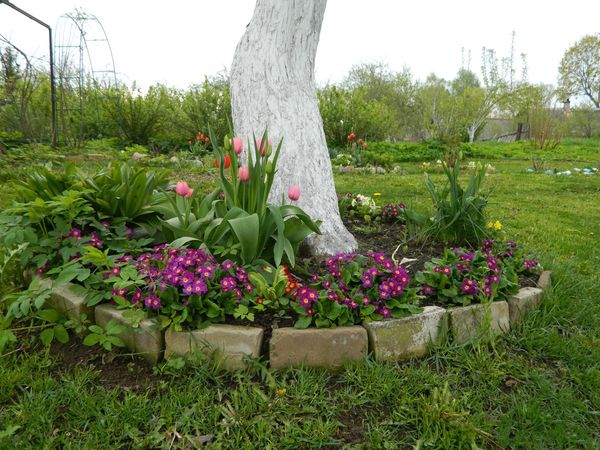

The most effective use of the near-stem zone is a flower bed. It can be a simple mono flower, or a beautiful arrangement of several tiers of plants combined with stones.What flowers to create a flower bed from depends, again, on the climate under the tree. If the crown is spreading and dense, then you need to choose unpretentious shade-tolerant flowers: bells, forget-me-nots, periwinkle, balsam, ferns. If the crown is vertical and lets in a lot of light, more light-loving nasturtiums, pansies, daylilies or daisies can be planted under it.
A wonderful floral arrangement can be created with the participation of perennial primroses: snowdrops, muscari, crocuses, daffodils, early tulips. These plants bloom early, when the apple tree is still in bloom, and since they bloom at slightly different times, the spring garden turns into a flower paradise, especially if the emerald lawn creates a contrast around it. But experienced gardeners are advised to place celandine under fruit trees - it is the best protection for trees from ants and aphids.
Shrubs
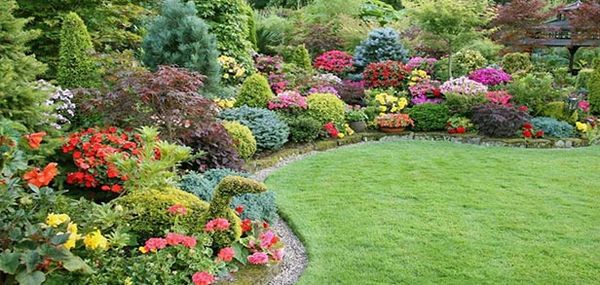

Shrub plants are not the best way to decorate the near-stem zone, since most of them have rather developed and deeply penetrating roots. Such a tree will compete with the apple tree for moisture and nutrients, which will lead to significant problems with both plants. For this reason, stone bushes cannot be planted under the apple trees, but they get along well next to them.
The exception is the raspberry - it does not compete with the apple tree, but such a neighborhood is possible only with regular pruning, and until the raspberry has grown. Later it will need to be moved to another location. The ideal option for the near-trunk zone is decorative undersized shrubs: multi-colored euonymus or miniature conifers. Blooming euonymus is in perfect harmony with green grass and small flowers.

